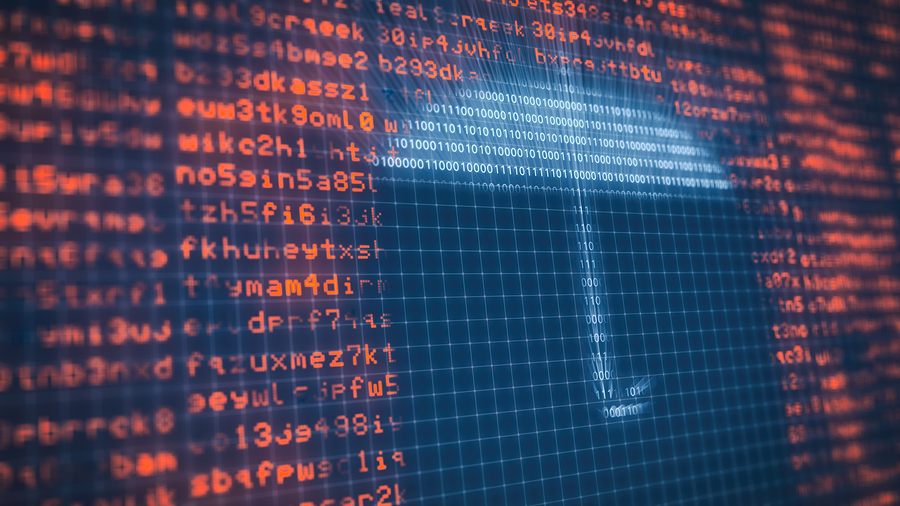Why Data Destruction is an Essential Element of Comprehensive Cyber Security
Why Data Destruction is an Essential Element of Comprehensive Cyber Security
Blog Article
The Value of Effective Information Damage Practices in Safeguarding Sensitive Information and Ensuring Computer System Safety
In an age where data violations are progressively usual, the relevance of effective data devastation practices can not be overemphasized. Carrying out robust data devastation techniques not just mitigates these threats yet likewise lines up with lawful compliance demands, ensuring that organizations maintain their track record and foster client trust.
Recognizing Information Destruction
Understanding information destruction is essential in today's electronic landscape, where sensitive details can quickly be endangered. Effective information devastation includes not simply erasing documents but making sure that information is irretrievable through thorough approaches. This procedure is essential for organizations that handle private customer info, copyright, or internal records, as any type of violation can lead to severe monetary and reputational effects.
Data devastation includes various strategies, including shredding physical media, degaussing magnetic storage gadgets, and using software-based remedies that overwrite information several times. Each technique offers a particular purpose and needs to straighten with the level of sensitivity of the info being thrown away. For instance, physical devastation is often preferred for hard disks having highly confidential data, while software methods may suffice for less sensitive information.
Additionally, adhering to sector criteria and laws, such as the General Data Defense Guideline (GDPR) or the Medical Insurance Portability and Liability Act (HIPAA), is important for compliance and to reduce legal dangers. Organizations has to develop a durable data devastation policy, train employees on finest techniques, and routinely audit their treatments to make certain that all sensitive information is taken care of safely and effectively.
Dangers of Inadequate Practices
Insufficient information devastation practices subject companies to considerable risks that can have far-reaching effects. When sensitive details is not correctly dealt with, it continues to be susceptible to unauthorized gain access to, which can result in information breaches and identification burglary. Such occurrences not just jeopardize the safety and security of individuals but additionally taint the company's track record, causing a loss of client trust and potential financial effects.
Moreover, regulative compliance is progressively rigid in numerous sectors. Failure to adhere to information devastation laws can cause significant fines and lawsuits versus companies. These fines can strain monetary resources and divert attention from core organization procedures.
On top of that, the misuse of recurring information can bring about copyright theft or company espionage, endangering competitive benefits (data destruction). The influence of poor data devastation extends beyond instant financial losses; it can likewise cause long-term damages to brand name stability and market position

Organizations need to identify that data protection is not solely regarding protecting against violations; it additionally encompasses the responsible monitoring of information throughout its lifecycle. Overlooking effective data destruction methods can have tragic implications, highlighting the need for durable measures to reduce these threats.
Finest Practices for Information Destruction
Implementing reliable information damage methods is necessary for safeguarding sensitive info and maintaining compliance with regulative standards. Organizations ought to embrace a multi-faceted approach to make sure that data is irretrievable, therefore preventing unauthorized gain access to and possible breaches.
First, information ought to be classified based on level of sensitivity, allowing organizations to use suitable damage techniques tailored to the level of risk. For digital information, utilizing software-based data-wiping devices that follow sector criteria can effectively overwrite existing information. Physical devastation approaches, such as shredding or degaussing, are crucial for tools that store delicate details, making sure total obliteration.
Developing a clear data find more info retention policy is crucial, outlining for how long different types of details ought to be maintained prior to damage. Routine audits of data storage systems are additionally required to recognize out-of-date or unneeded data needing removal.
Furthermore, training employees on the significance of information destruction and the specific methods to follow fosters a culture of safety within the company. Ultimately, keeping paperwork of data destruction refines supplies responsibility and supports compliance with internal plans and exterior regulations. By adhering to these finest methods, companies can significantly minimize the dangers linked with information direct exposure.
Legal and Compliance Considerations

Failing to adhere to these regulations can cause serious charges, including considerable penalties and reputational damage. Organizations needs to implement a robust information destruction plan that aligns with these legal structures and gives clear standards on the correct techniques of information disposal, whether physical shredding or digital cleaning.
Moreover, maintaining paperwork of information destruction activities is essential for demonstrating conformity throughout audits or inspections. By focusing on Going Here legal and conformity factors to consider, companies can improve their information safety and security stance and foster depend on with customers and stakeholders, inevitably adding to a much more safe information monitoring environment.
Advantages of Effective Information Devastation
Effective information damage methods expand past mere compliance; they provide substantial advantages to organizations that prioritize them. By ensuring that sensitive information is irretrievably destroyed, companies mitigate the danger of information violations and the possible economic repercussions linked with them. This proactive approach not just safeguards against unapproved gain access to but additionally improves the general trustworthiness of the organization in the eyes of stakeholders and customers.
Applying durable data damage techniques, such as physical devastation of storage space gadgets or innovative information cleaning strategies, contributes to the strengthening of a company's cybersecurity posture. data destruction. It lowers the probability of copyright theft and safeguards home proprietary information, thus keeping an one-upmanship in the marketplace

Conclusion
In final thought, efficient data damage practices are important for securing sensitive details and enhancing total computer safety and security. By applying comprehensive techniques such as software program, shredding, and degaussing overwriting, companies can mitigate the dangers connected with unapproved accessibility and information breaches. Adherence to governing requirements, consisting of GDPR and HIPAA, further strengthens conformity and safeguards against legal repercussions. Eventually, a commitment to robust data devastation methods promotes a society of obligation, thus enhancing an organization's cybersecurity pose and preserving customer trust.

Report this page